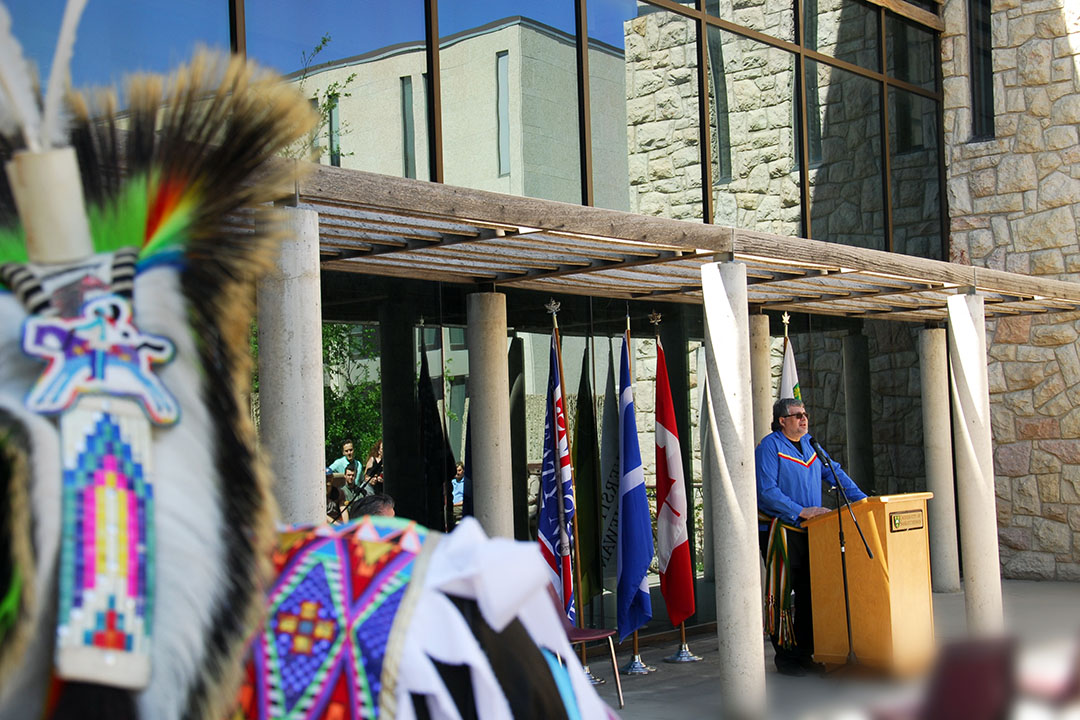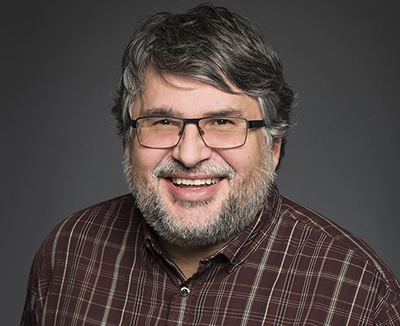
Native Law Centre honoured with Indigenous name
At a May 18 ceremony, the U of S Native Law Centre (NLC) added the Cree words “Wiyasiwewin Mikiwahp” meaning “law lodge” to its current name.
By Cat BonnerThe change is part of a broader revisioning process for the centre—now known as Wiyasiwewin Mikiwahp Native Law Centre—which has reimagined its vision, mission and goals in a new strategic plan. The renaming also sends a special message to Indigenous communities that the centre respects Indigenous laws as well as Canadian laws.
Larry Chartrand, academic director of the centre, led the revisioning committee and said that the centre’s new name reflects a commitment to the next level of engagement with the Indigenous law community.
“We felt it shows the NLC takes its mission of Indigenization seriously by engaging more fully and respectfully with the languages of the territory on which it is situated,” he said, adding that the addition of the Cree component to the original name honours the centre’s long history and global reputation as a leader in its field.
“The name of the Native Law Centre is significant, it represents the vision of (founder and former College of Law dean) Roger Carter and his belief in the intellectual capabilities and resiliency of Aboriginal students to succeed in law school,” said Sákéj Henderson, research fellow at the College of Law. “The centre has been gifted many honours by the Aboriginal elders, knowledge keepers and community, but none was more important than earning an Indigenous name.”

The new strategic plan focuses on the protection and promotion of Indigeneity, advocating a trans-systemic approach to legal education and research, and challenging colonial mindsets in both Indigenous and non-Indigenous communities. The centre’s new mission is to advance deep reconciliation through legal research and education that promotes to the fullest Indigenous peoples’ rights to self-determination.
The plan also supports the implementation of several Truth and Reconciliation Commission (TRC) Calls to Action, including TRC 27, which calls on lawyers to be trained in areas such as cultural competency and anti-racism.
“Small steps to reconciliation are occurring, but we still need to push law schools to be more inclusive,” said Chartrand. “Our mission is to defend Indigenous legal rights and promote true reconciliation, and remove the colonial barriers that devalue these objectives.”
The NLC was founded in 1975 to fulfill the need for a multi-functional centre specializing in legal education for Indigenous people, that also advances the interests of Indigenous people in the development of Canada’s laws and legal system, and spreads knowledge on Indigenous peoples and the law.
The centre has played a huge part in increasing the number of Indigenous lawyers in Canada through its internationally renowned summer program (formerly the Program of Legal Studies for Native People), which prepares students to succeed in law school. Close to 1,300 students have graduated from the eight-week program to date, with another 53 enrolled this year. Around 75 per cent of summer program graduates have gone on to enrol in law schools across Canada.
With an exceptional legacy and an exciting future, the NLC is entering the next stage of its evolution, one that seeks now more than ever to empower Indigenous people.
“The centre has turned into legal warriors, scholars and diplomats that continue to lead communities into a new era of reconciliation and justice,” said Henderson. “The new Cree name is a message for the generations of youth to become self-determining and protect the rights of the Indigenous peoples.”

